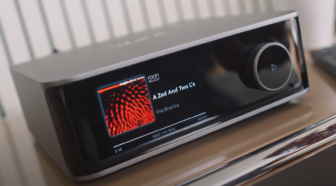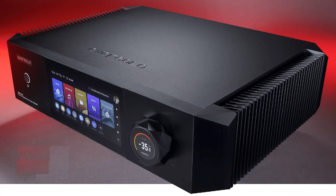Bluesound Node N132 vs Node Nano
Instead of simply updating the long-running Node, Bluesound surprises with three new streamers. How do the 2024 Node and the cheaper Nano perform in the test?
Bluesound is known for its user-friendly and intuitive BluOS streaming system, which has long been a top contender in its category. The focus has traditionally been on the Node model, which for many years has successfully balanced affordability and quality, meeting a variety of demands. Regular software updates ensured that the devices remained up-to-date.
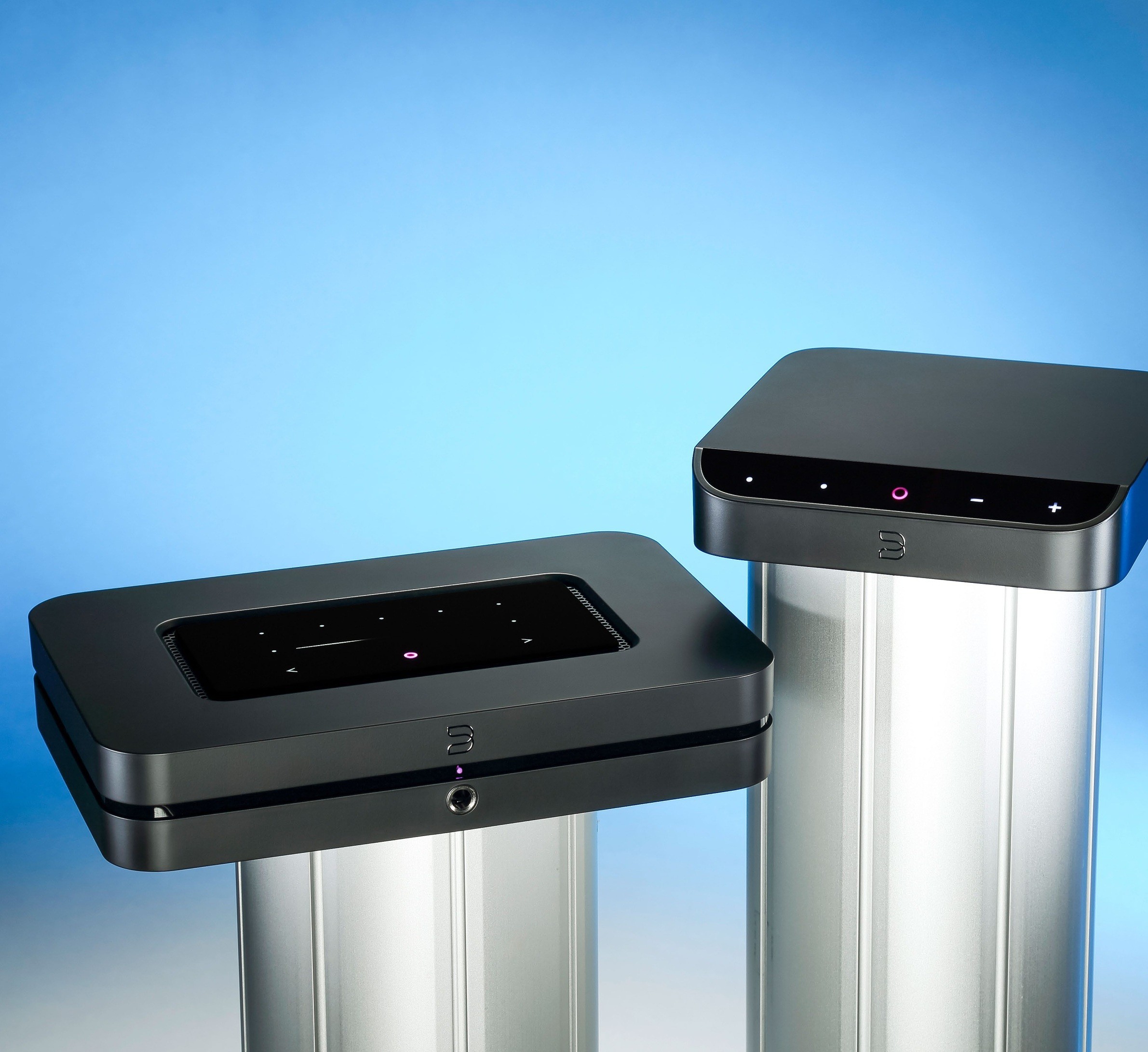
While Bluesound’s “core portfolio” has mostly seen refinements in recent years – and there’s nothing wrong with optimizing an already good product – the brand has now taken an unexpected step forward. Three new network players were recently introduced, with the Node 132 representing the latest iteration of the “standard” Node, labeled “N130.” In this test, we clarify whether its updates meet expectations and if it’s worth purchasing.
There are also new Bluesound solutions for both higher and lower price ranges – the larger Node Icon, with a big screen and priced at around $1,150, will make its debut later this year.
But there’s also good news for the lower end: For beginners or those looking for a secondary setup, there’s the new Nano, priced at just $365, making it significantly cheaper than previous Nodes. This made it our second test candidate.
Whether Bluesound wants to attract new customers, outshine the competition, or simply prove that BluOS can also be affordable: The result is exciting and very welcome.
While there are many streamers in the $1,100 price range – often with rich feature lists and great sound offering a good price-to-value ratio – there are very few audiophile network players in the truly low price regions.
When a digital specialist like Bluesound builds such a streamer, it has the advantage that the refined software, developed over years, is also incorporated into the new series, free from many early technical issues.
The BluOS Digital System
All three new network players offer nearly identical extensive digital feature sets. The BluOS streaming system communicates with other devices via Bluetooth and Airplay. Internet access gives you Spotify and Tidal Connect, Roon, and of course the BluOS app, which provides access to numerous other music services like Qobuz, Amazon Music, and Internet radio, as well as connection to music servers. The only thing customers might miss is Chromecast.
The app also enables multiroom support in a BluOS system, with some sound adjustments via a two-band equalizer for treble and bass – only the Nano lacks the necessary settings for a subwoofer due to the absence of a subwoofer output. While such a comprehensive package might be expected in more expensive devices, it’s a big plus for the Nano as an entry-level device.
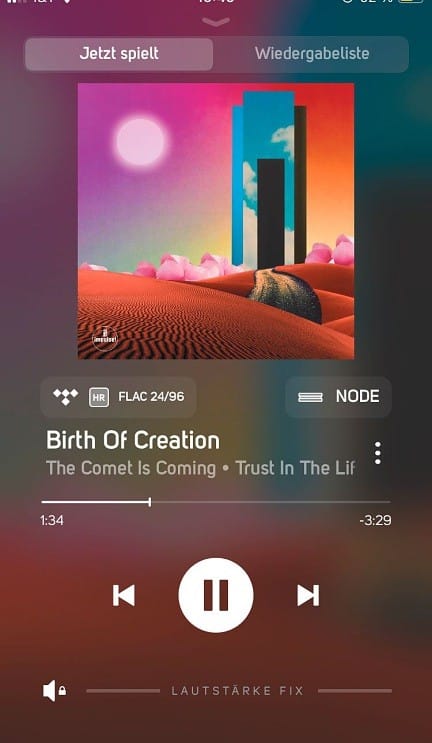
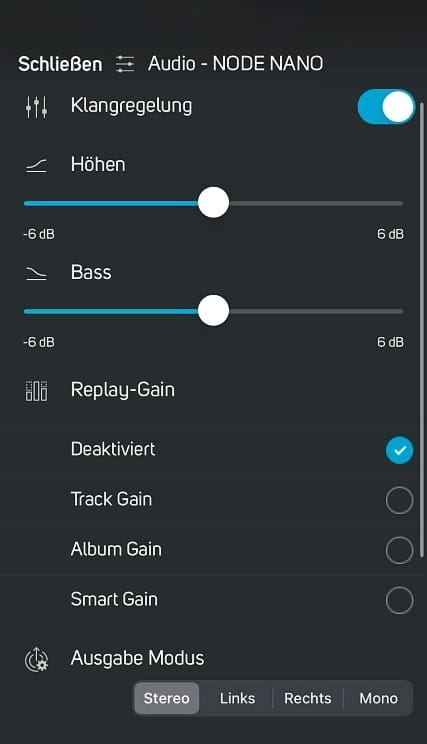
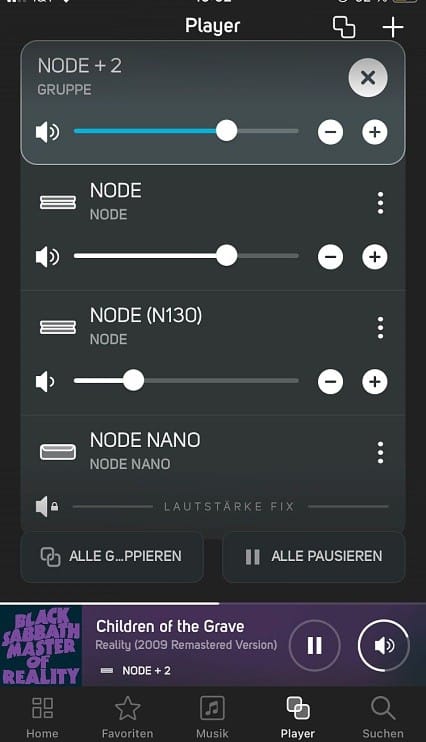
The two larger network players in the new series also offer integration with the powerful Dirac Live room correction software – although the license must be purchased separately.
Despite the noticeably lower price, the Nano appears smaller but not technically inferior compared to the new Node: Both use the same DAC, the top-of-the-line ES9039Q2M from ESS. However, the final result depends on how the chip is integrated and the rest of the circuit design, as our measurements show: the “full” Node has better noise and distortion performance.
The switch to the mentioned DAC is one of the few changes in the new Node compared to its predecessor and now allows for DSD music playback on both the Node and Node Icon (after an upcoming software update). The Node Icon, which is not part of this test, even uses two of these DACs in a dual-mono design.
TEST DEVICES
Streamer/DAC: WiiM Pro Plus, Eversolo DMP-A8
Cables: Audioquest, Silent Wire
Amplifiers: Marantz Model 60N, Exposure 2010
Speakers: KEF Q Concerto, Audiovector Trapeze
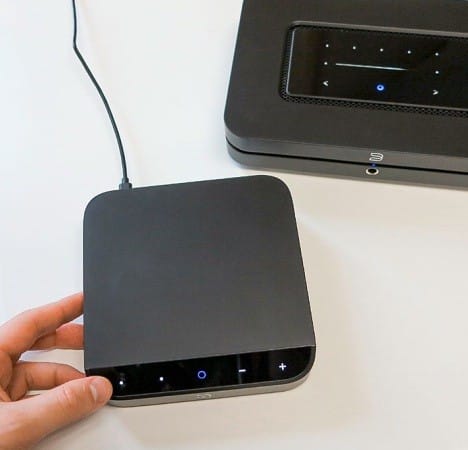
The Node Nano: small but mighty?
Back to the Nano, whose simplified design is mainly reflected in its connections. It has no inputs, and it lacks the previously mentioned subwoofer output and HDMI connection. It also lacks a headphone amplifier and output, but it can drive wireless headphones via bidirectional Bluetooth. While the Node and Node Icon are versatile devices, the Node Nano sticks to the classic task of streaming music, outputting it either analog or digital (optical/coaxial).
But as a streamer, that’s more than enough, and for a secondary or tertiary system or an entry-level HiFi setup, the Node Nano fulfills its role as a sound provider and can act as the start or endpoint in a multiroom setup. It also retains the USB port, allowing it to output its digital signal to a USB DAC or play music from a USB stick. Thanks to the “Server Mode,” other BluOS devices can even play music from a stick connected to another Node.
Music Albums
Nick Cave: Wild God
Unsuitable as a mood booster but perfect for deep immersion.
Köster/Hocker: Fremde Feddere
Textually and musically skillfully adapted to Kölsch (Cologne dialect) classics.
What’s different with the new Node?
If you place an old and new Node side by side, you might notice a small optical difference: the new Node’s front headphone jack is 6.35 mm instead of 3.5 mm. The larger Icon has two headphone jacks, one on the left and one on the right. The change hints at another upgrade: The built-in headphone amp is no longer a basic feature but a high-quality AAA headphone amp from THX, designed to enhance sound with low noise.
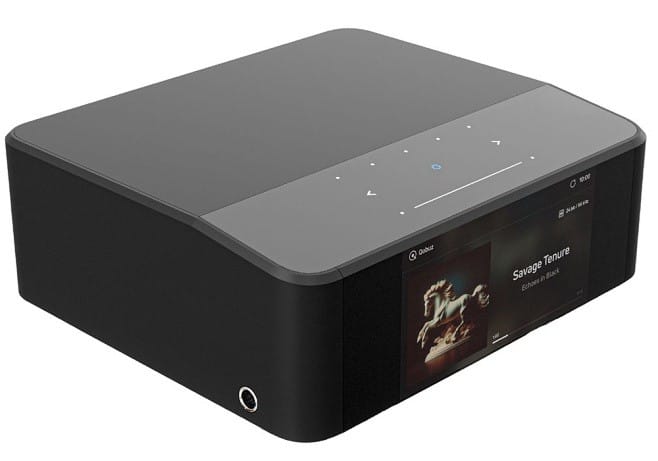
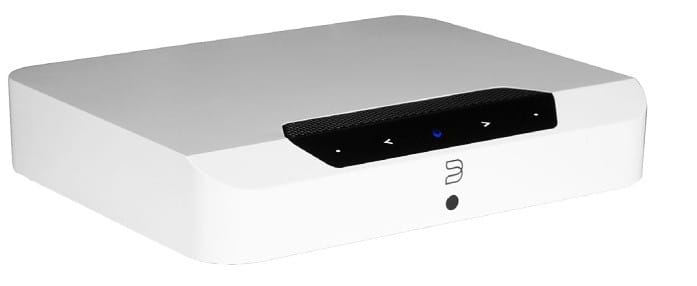
Beyond that, the only way to distinguish between the Nodes is the nameplate – the connections are identical and practical. Both analog and digital outputs connect to amplifiers and active speakers, and the subwoofer output is easy to use. HDMI with eARC is available for TV connections, and there’s a 3.5mm input that converts to an optical digital input via the included adapter.
The sleek capacitive touch buttons on the top were carried over from the previous model. They control functions like volume, play/pause, and favorites. On the Node, the volume is displayed, and the buttons can be motion-activated, but not on the Nano. Instead of being on the top, the touch field on the Nano is placed on a front slant, reminiscent of the Powernode Edge, which, like the Nano, is a smaller version of the Powernode streaming amp (essentially a “Node with amplifier”).
The smallest of the three new streamers also has fewer buttons and only two presets, though control will mostly be handled via the app. Bluesound offers a remote for $75, and the app can learn other IR remotes. It’s a nice feature, but we rarely missed the remote, as Bluesound’s parent company Lenbrook (which also owns NAD and recently MQA) has created an excellent user interface with the BluOS app, which they continuously improve. Since our last Bluesound test (the smaller streaming amp Powernode Edge, a major update to version 4.0 was released, which changed the entire BluOS interface – and in our opinion, improved it once you adjust from the familiar predecessor, which is still available.


Exciting sound comparisons
After thoroughly examining the technical changes, usability, and features of the newcomers, we moved on to an intensive sound check in the listening room.
The Bluesound Nano first had to compete against its rival, the WiiM Pro Plus. The WiiM sounded slightly more powerful and full during Miles Davis’ “So What,” while the Nano impressed with its more detailed reproduction. The WiiM sounded rounder and sweeter, especially with strings, but the Nano remained neutral, sober, though slightly less engaging. With “Concierto de Aranjuez,” the Nano took the lead, revealing more of the cracks in Nick Cave’s voice during “Wild God.” However, both devices were evenly matched when we tested the Pogues, showcasing their ability to merge folk-punk with socially critical lyrics.
While the WiiM offers an analog input and a lower price, the choice between the WiiM and Nano comes down to personal preference or possibly dealer recommendations.
Old vs. new Node
If you’ve ever regretted buying a newer model that didn’t meet your expectations, rest assured: the difference between the old and new Node is significant, and you can clearly hear the improvements without being a “bat-eared” audiophile.
The older Node sounded tired and less defined, while the 2024 version consistently impressed with more detail and clarity.
Gerd Köster’s vocals, often difficult to understand, became more articulate, especially in his Cologne dialect rendition of “A Pair of Brown Eyes,” where the emotional depth was more apparent.
In classical music, the new Node excelled in spatial imaging, with sound detaching better from the speakers and individual sources becoming clearer.
Worth the extra cost: Node
We wanted to see if the Node’s higher price was justified by more than just its features – and the answer was a clear yes. Even with a modest system, the Node offered more bass precision, airiness, and overall better dynamics. It rendered fine details where the Nano presented a broader sound.
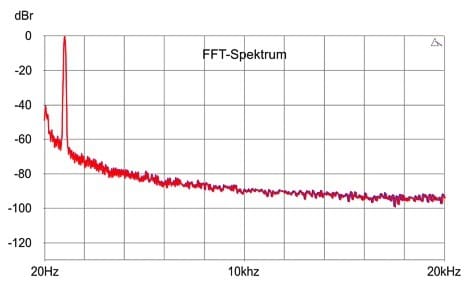
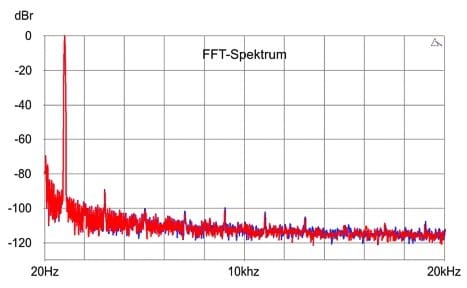
Compared to the WiiM and Nano, the Node offered more richness and power, and its superior technical advancement was clearly evident. Even with budget setups, investing in a higher-quality source brings lasting enjoyment in music listening.
IF YOU’RE ALREADY IN THE BLUOS ECOSYSTEM, YOU CAN NOW EXPAND IT EVEN MORE FLEXIBLY!
Bluesound Node (N132) vs Node Nano Comparison Table
| Category | Node (N132) | Node Nano |
| Product / Price Class | Streamer / $530 to $1,050 | Streamer / under $365 |
| Website | bluesound-deutschland.de | bluesound-deutschland.de |
| Price (in Dollars) | $630 | $365 |
| Dimensions (B x H x T in cm) | 22 x 4.6 x 14.6 | 14.3 x 3.6 x 14.3 |
| Weight (kg) | 1.09 | 0.57 |
| Sound Quality (40%) | Very good (6/10) | Good, balanced sound, no major weaknesses (5/10) |
| Noise Floor Digital Null (dB) | Satisfactory (84 dB) | Poor (56 dB) |
| Output Voltage (V) | 2.04 | 2.15 |
| Output Impedance (Ohms) | Low (130) | Slightly higher (740) |
| THD at -9dBFS (%) | Low (0.007%) | High (0.09%) |
| FFT Spectrum | Good | Satisfactory |
| Features (25%) | Very good (7/10) | Satisfactory (5/10) |
| Digital Inputs/Outputs | Combined optical input / mini-jack, HDMI / outputs: optical, coaxial, subwoofer | Outputs: optical, coaxial |
| Switchable Digital Filter | Yes | Yes |
| Outputs | Cinch | Cinch |
| Volume Control Output | Yes | Yes |
| Headphone Output | Yes (6.3 mm) | No |
| Music Formats | Many, incl. Hi-Res, DSD, MQA | Many, incl. Hi-Res, MQA |
| Build Quality (Haptic/Finish) | Good | Good |
| Streaming Standards | Airplay, Spotify/Tidal Connect, Roon Ready, Internet radio, Streaming services via app | Airplay, Spotify/Tidal Connect, Roon Ready, Internet radio, Streaming services via app |
| USB Storage | Yes | Yes |
| Handling (25%) | Satisfactory (6/10) | Satisfactory (6/10) |
| Remote Quality/Manual/App | None / Good, only in English / Very good | None / Good / Very good |
| Device Operation & Display | Good (no display) | Satisfactory (no display) |
| Service & Environment (5%) | Satisfactory (6/10) | Satisfactory (6/10) |
| Warranty (Years) / Packaging | 2 / Compact, cardboard | 2 / Compact, cardboard |
| Power Consumption – Standby (W) | -3.5 | -2.4 |
| Overall Rating | Good (7/10) | Good (6/10) |



